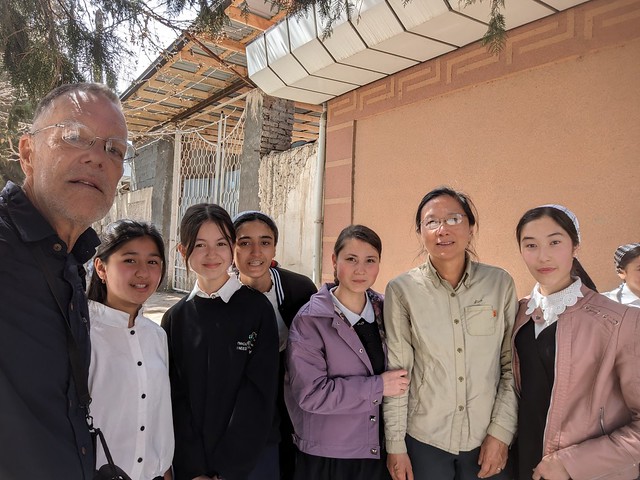The Tajik language is a Persian language, which used to be the language of Central Asia, until the arrival of waves of Turkic-speaking people/conquerors. While everyone else (e.g. Uzbeks, Kazaks) in the region now speak a Turkic language, the Tajik speakers continue to speak their Persian language, living amongst their Turkic speaking neighbors. Trying to recognize the Tajik speaking people, the Soviets first constructed Tajikistan in 1929, which led to 6 years of civil war upon the dissolution of the Soviet Union with different regional groups vying for control. People also looked more European which is confirmed by this study.
The other thing we noticed about Panjakent was people are particularly welcoming. Young people are very gregarious. We were constantly being greeted and welcomed (1st below). Since Tajiks and Uzbeks live on both sides of the border, we have to attribute the extra friendliness to the border being closed for much of the 2010s due to political tensions. It finally opened in 2018 then was promptly shut during COVID. It just reopened within the last year.

In Pajakent during Ramadan, there is a flurry of street food cooking activity in the hour just before the daily fast-ending Iftar meal. For us, it was the perfect opportunity to purchase hot, tasty, deep-fried treats.

We stayed at a hotel just a block from the Бозор (Bazaar) and Olim Dodkho Mosque.





The excavated ruins and walls of an ancient city can be found above the southern edge of town. There are great views north to snow-capped mountains. We walked up there both days we were in town.








One day we walked down to the wood-planked suspension bridge over the Zeravshan River, checking out some public art and architecture along the way. The bridge shuddered each time a vehicle drove over it. See the one minute video first below or click here.











No comments:
Post a Comment